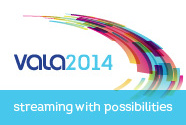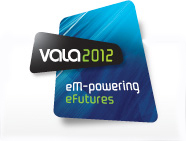https://drive.google.com/file/d/0BxlbeayLWxeRV1drWFJGanRaOU0/view?usp=sharing
Tag Archives: Edmund Balnaves
VALA2014 Session 2 Balnaves
Complex harvesting for content from public sources and emailVALA2014 CONCURRENT SESSION 2: It’s All About the Data Edmund BalnavesProsentient Systems, NSW Please tag your comments, tweets, and blog posts about this session: #vala14 and #s6 |  |
Abstract
This paper presents the results of a project for complex harvesting system from web and email sources integrated with open source platforms to improve discovery of information about or relevant to the organisation from public internet sources. The paper discusses methods of harvesting, drawing on a mix of RSS, Google API search and simple web parsing. The paper presents the results of automated metadata allocation and subsequent manual curation. The project highlights the need to use multiple web scanning techniques, so as to be sufficiently exhaustive to catch relevant references, but also sufficiently specific to avoid unduly large false positive candidates for selection.

This work is licensed under a Creative Commons Attribution-NonCommercial License.
VALA2012 Session 5 Balnaves
VALA2012 Session 5 BalnavesReigniting the OPAC as a metadata hubVALA2012 CONCURRENT SESSION 5: metaFutures Edmund BalnavesProsentient Systems, NSW Please tag your comments, tweets, and blog posts about this session: #VALA2012 and #S5EB |  |
| View the presentation on the VALA2012 GigTV channel Tuesday, February 07, 2012, 3:15 PM AUSEDT, 32 Minutes 17 Seconds. |
Abstract
The OPAC, being a well-structured metadata resource with open extensibility through a well-understood ontology, should not be neglected as an effective path to effective resource delivery. Combined with an open source approach the OPAC can be re-invigorated as a metadata hub. Through web 2.0 and service layers such as OAP-PMH and by importing metadata from existing electronic sources the traditional OPAC and service as a search interface through to both print and electronic resources.

This work is licensed under a Creative Commons Attribution-NonCommercial License.
